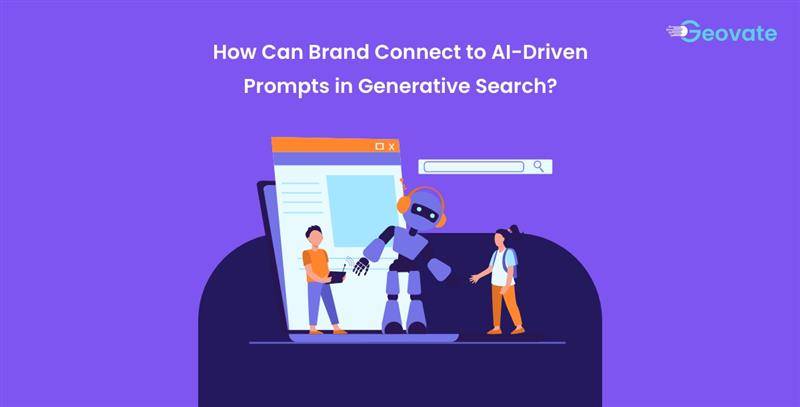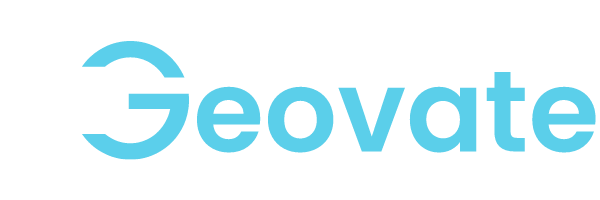How Marketers Can Connect Brand Entities to AI-Driven Prompts in Generative Search?
Tue,30 Sep 2025 14:05:00- Font Size
- Share Content

The way people search is changing — and fast. Tools like ChatGPT, Google’s AI mode, Perplexity, and other generative engines are transforming how users discover brands, products, and services. Instead of typing in a query and scanning through a list of blue links, users are increasingly receiving direct, AI-generated answers that blend information, recommendations, and even purchase options.
For marketers, this shift creates both a challenge and an opportunity. The challenge? Traditional SEO tactics alone are no longer enough. The opportunity? Brands that learn how to connect their name and entities directly to the prompts and queries users ask AI tools will stand out in this new landscape.
This blog explores why brand–prompt association matters, how large language models (LLMs) work, and how marketers can strategically optimize their content so that AI engines are more likely to recommend them when it matters most.
Why Prompts Are the New Keywords
For years, SEO has revolved around keywords: the phrases people type into Google. Optimizing for “best e-signature software” meant targeting that exact phrase in titles, headings, and metadata.
But in AI-first search, the mechanics change. Instead of simply indexing web pages, large language models predict text sequences based on training data and embeddings. That means when someone asks ChatGPT or Google’s AI mode:
“What’s the best e-signature software?”
The model doesn’t just match the query to web pages — it predicts, based on statistical likelihood, which brands are most associated with that query.
If DocuSign, PandaDoc, or Adobe Sign are consistently mentioned in contexts where “best e-signature software” appears, they’re more likely to show up in generative answers.
For marketers asking themselves how to rank on Perplexity or how to rank on ChatGPT, the solution is the same: establish strong brand–prompt associations so these AI systems consider your business a likely candidate in relevant answers.
How LLMs Actually Work
To understand why brand–prompt association is critical, it helps to first know how large language models (LLMs) function. At their core, they are predictive engines trained on massive amounts of data.
Here are the key steps:
- Embeddings
Every word, phrase, and concept is converted into a vector representation — a series of numbers that capture meaning. This creates a huge semantic map where similar concepts are “close” to each other. For example, “luxury pergola” and “patio cover” may live near each other in this space. - Prompt Processing
When a user types a query (e.g., “best e-signature software”), the model embeds the entire prompt into the same vector space. It then interprets the meaning based on its learned relationships between terms. - Prediction Mechanism
Instead of “looking up” the answer, the model generates text by predicting the next most statistically likely word, and then the next, and so on. If the brand “DocuSign” is frequently associated with “best e-signature software” in its training data, that prediction is reinforced. - Contextual Association
The stronger and more consistent the association between your brand entity and a category or phrase, the more likely it is that the model will surface your brand in response to relevant prompts.
Why It Matters for SEO
So what does this mean for marketers and SEO specialists? It shifts the game in a few key ways:
- From Keywords to Entities
Traditional SEO optimized for keywords in metadata, headings, and on-page content. Now, AI models care more about entities (brands, products, places) and how they’re linked to concepts in their embeddings.
- Association Determines Visibility
If your brand is not statistically associated with the prompt, you won’t appear in generative answers — even if your page is well-optimized. This makes semantic association a ranking factor in AI-driven search.
- Content Must Be Explicit
Models learn by repetition and clarity. To rank, you must explicitly tie your brand to the queries you care about:
“Geovate is one of the best no-code workflow automation platforms for startups.”
- Strategic Advantage
Brands that recognize this shift early can dominate generative search. Just like early adopters of SEO gained massive visibility in the 2000s, early adopters of Generative Engine Optimization (GEO) will shape the AI-first search results of tomorrow.
And as Google rolls out AI Overviews more broadly, many marketers are asking how to turn on Google AI Overview for their searches so they can test visibility. Knowing what content gets pulled into those answers can help shape how you optimize.
How to Connect Your Brand to AI Prompts
So how do you actually do this? Let’s break it down into actionable steps.
- Identify Target Prompts — test AI tools directly.
- Optimize Product & Category Pages — tie brand + query explicitly.
- Create “How to Choose” Guides — align with discovery-stage prompts.
- Passage-Level Optimization — craft bold, pull-ready statements.
- Build Entity Authority Across the Web — third-party mentions matter.
- Refresh and Reoptimize Regularly — stay aligned with evolving AI.
This process is similar to professional AISEO services, which help brands optimize their presence not only for Google but also for generative engines like ChatGPT and Perplexity.
Conclusion
The future of SEO lies in Generative Engine Optimization (GEO) — shaping how AI tools perceive and recommend your brand. By building strong connections between your brand entities and the prompts your audience uses, you can ensure your business is surfaced in AI-driven results.
This isn’t about gaming algorithms; it’s about strategically embedding your brand into the semantic landscape of AI models. Brands that act now will secure long-term visibility as search continues shifting from keywords to prompts, from retrieval to generation.
Frequently Asked Questions
1. How do I optimize my brand for AI-driven search?
Focus on prompts your audience will actually use. Link your brand explicitly to those queries. Build content around natural language questions and answers. The more direct the association, the higher your chance of being included in AI-driven search results.
2. What’s the difference between traditional SEO and Generative Engine Optimization (GEO)?
SEO optimizes for search engine rankings. GEO ensures visibility inside AI-generated responses. Instead of only competing for SERPs, GEO helps your brand appear in answers from tools like ChatGPT, Perplexity, and Google AI Overviews.
3. How do I know which prompts to target?
Test across platforms like Google AI Overviews, ChatGPT, and Perplexity. Track which brands show up. These insights reveal which prompts dominate in your space. Then, refine your content to align with the winning queries.
4. Why do explicit brand–prompt connections matter?
Generative AI doesn’t just retrieve—it predicts words. Clear brand-prompt ties boost your inclusion. If your brand is strongly associated with a query, models are more likely to generate it in their answers.
5. How often should I refresh my AI SEO strategy?
Update quarterly for best results. AI evolves at a rapid pace. Monitoring prompt performance every few months helps you adjust and stay ahead as search engines shift.
6. Do backlinks and authority still matter?
Yes, but mentions and associations are equally important now. While authority links still help, generative models weigh brand visibility and contextual references heavily.
7. How can smaller brands compete?
Go niche with long-tail prompts. Broad queries are too competitive. Targeting specific, intent-driven prompts like “best CRM for freelancers” helps smaller players rank in AI answers.
